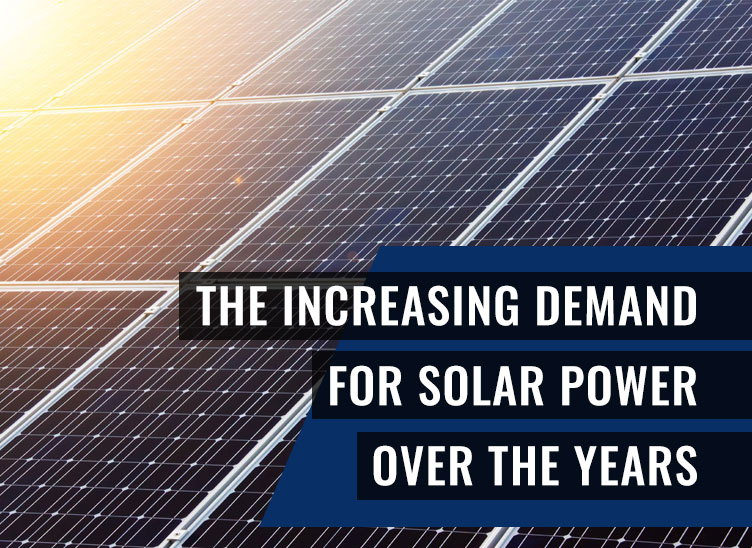
The Increasing Demand for Solar Power Over the Years
Have you noticed more and more homes in your neighborhood covering their roofs with solar photovoltaic panels?
What about the businesses or factories in the area? Have they started looking at alternative power sources to save money and meet industry regulations?
Solar power continues to become more affordable and accessible in the United States, which has made it far more prevalent than it was just a decade or so ago.
In fact, since 2008, the number of photovoltaic panel installations has increased by 35 times what it was before that.
A Maturing Market
The residential market for solar power continues to grow, and it reached record highs in 2019 with 712 megawatts installed. The U.S market added around 2.6 gigawatts of solar photovoltaics in the third quarter alone.
This is a 45% increase over the previous year, and a 25% increase over the previous quarter.
The outlook for the future is equally bright, and it has been forecasted that with the current level of investments, accelerated build-outs, and other factors, the total installed solar capacity could more than double over the next 5 years.
How Much Power Does Solar Provide?
It is estimated that the current number of installations across the country is producing somewhere around 70 gigawatts, which is enough energy capacity to power more than 12 million homes.
As the installation prices and ongoing costs continue to go down, solar continues to provide a large chunk of the country’s electrical generation. In 2010, solar constituted a mere 0.1% of our total power, while in 2019 it was closer to 2.5%.
What Does a Solar Installation Cost?
The costs for solar photovoltaic panels have been steadily decreasing since around 2014, which has led to the recent growth spurts in the industry.
Over the last decade, the cost to install a solar system has dropped more than 70%, making the costs as low as they’ve ever been. According to the Solar Energy Industries Association, the average-sized residential system dropped from a pre-incentive price of $40K in 2010 to around $18K today. Utility-scale prices currently range from $18/MWh to $35/MWh, which is competitive with all other forms of energy generation.
What Is Holding Back Solar Adoption?
While the costs of the materials used in photovoltaics continue to decline, and the durability and reliability of the materials continue to increase, there are some other costs that do have an impact on the rate at which residentials and businesses are able to install their own systems.
While the costs of the materials and the finished products have become much more affordable over the years, it’s the “soft” costs that have yet to catch up with the developments in the industry.
This can include everything from gaining permits and financing to labor and supply chain concerns. There is a lot that has to be done in order to complete an installation, and that means a lot of people/businesses/regulations are going to get involved. And in order reduce these soft costs, new programs will need to be initiated to make the entire process more efficient, effective, and affordable.
Working on Storage
Solar power, by its very nature, affected by a wide range of variables. The sun’s location, how long it’s in the sky this season, the level of cloud cover, and several other factors can impact the amount of energy that every installation can generate.
The solution is – and always has been – storage. Technology for storing all this energy is growing very rapidly. As it is right now, the power grids have been there to absorb the variable energy produced by photovoltaics. However, we tend to use more power at night – when solar is producing a lot less energy – than we do during the day when the sun is shining bright and powerful, which is not an ideal balance.
Energy storage systems will change the way this works. While the prices for storage aren’t coming down as fast as solar, they are developing with an eye toward being paired with solar technology to help smooth out peak demand times and make residential and industrial installations even more effective and efficient.
Solar Power Components
Every individual component that goes into these photovoltaic installations can contribute to better results and performance advantages. At Clark Rubber & Plastic, we produce everything from solar panel rubber inserts and frameless clip assemblies to electrical coverings and cable inserts.
These high-quality solar plastics and rubber for solar structures can help reduce material and manufacturing costs and provide important corrosion resistance and long-term value.
This is only the beginning of a very bright future with solar power.
